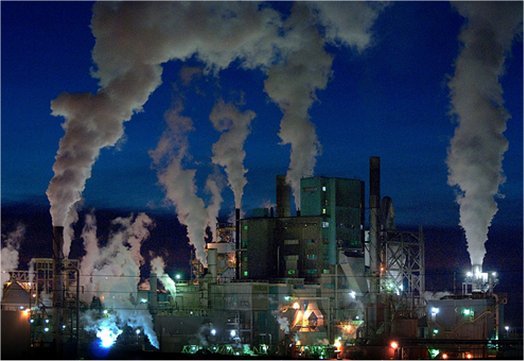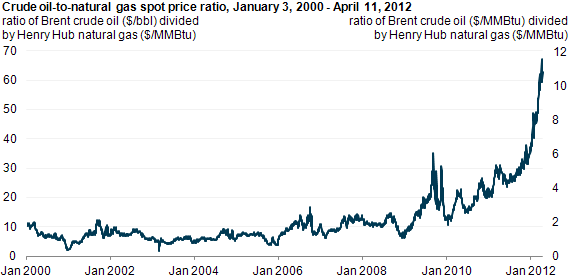Expect a lot of updates on this post. Thanks to Buck Farmer, who told me that I needed to learn LaTeX to make this prettier.
COAL FIRED POWER PLANTS

A coal fired power plant.
Coal fired power: it provides a lot of our energy, is less expensive than petroleum by far, makes cheap electricity, and causes all sorts of health ailments and pollution. Coal power plants produce particulate matter, sulfur pollution, and other pollution, resulting in deleterious health effects.
Coal fired power plants provide a huge chunk of the world’s energy. It provided almost 50% of US electricity in 2009. Today, the math section is a review of how much energy is in coal, how much coal we need to operate a single power plant, and how much coal we need to operate all the coal fired power plants in the US and China.
The topic of coal fired power plants used to be simple. Thanks to fracking, natural gas prices are now approaching coal prices. This post is written with 2009 information. It is largely relevant today, but this landscape may change in a few years as more power is produced via natural gas in the US. Suffice it to say that natural gas has become considerably cheaper in the US:

The price ratio per unit of heat in natural gas prices compared to oil in the US. The ratio used to be around 1. Now you get a lot more heat out of natural gas per dollar, thanks to the abundance from hydrofracking.
We will discuss this more in a future post.
Maths! Warning, this is pretty shocking!
High grade coal has an energy density of about 32MJ/kg (For our math, lets assume the best coal is used everywhere. In reality it is about 24, so my world with coal is 33% nicer than the real world). Compare this to a gallon of gasoline, from my very first post, at 120MJ. A gallon of gas weighs about 3kg, with an energy density of 40MJ/kg, slightly higher than coal, or nearly twice as high an energy density of a majority of coal.
A watt is a joule per second. A megawatt is a megajoule per second. A coal fired power plant can produce 1GW per second, which would be a gigajoule expended per second. But remember from our thermal efficiency post, these powerplants are not all that efficient! Let’s say a coal one averages 35% for thermal efficiency.
31.25kg of coal used per second to produce 1GW of heat! But remember from the thermal plants post, thermal plants tend to only be about 35-40% efficient!
A 1000MW coal fired power plant burns nearly 200 lbs of coal PER SECOND to provide power. That is my weight in coal for every second.
Let’s continue blowing your mind. There are 86,400 seconds in a day, yes? (yes).
2.8 megatons of coal per year for a single coal-fired powerplant! Okay, 200 lbs. per second leaves a bigger impression. Here is another way to look at it. How much coal does it take to keep a 100W lightbulb lit for a year?
280kg! Per year! This is about 2 lbs. of coal per day to power a 100W lightbulb. “But Jason,” you say, “We don’t get all our electricity from coal!” This is also true. We get almost ½ of our electricity from coal. But say ½ is from coal, the other ½ is from hydro power. If you turn off your light, we get back the ½ from coal, saving a pound of coal from being burnt. What about the ½ from hydro? Welp, that can go and power another light. The ½ of the light that would have been powered by coal. So yeah, even though ½ of our power comes from coal, the opportunity cost of using that light is the equivalent of getting all of it from coal.
Let me repeat that. If you have a 100W incandescent bulb, and you leave it on for a day, you just burnt 2 lbs. of coal. Good job. If turning off your lights to save on electricity is not enough to get you to shut em off, just picture that much coal burning to keep that light on. Your laptop computer uses about 2-3 pounds if it runs the entire day. Your TV, if left on, will burn more like 10 lbs. of coal a day.
One last part. China provided 500GW of coal power provided in 2012. The US provided 200GW in 2009 (note: thanks to shale gas and fracking and using the gas to produce electricity, the amount provided by coal has dropped!). 200GW of coal power in the US means 600 megatons of coal per year in the US using our numbers, and 1500 megatons of coal in China. And remember, my numbers are rosier than the real world.
Turn off your lights.
The qualitative stuff!
Emissions from coal-fired power plants, and health trade-offs

Smog. Not fun to breath.
Burning coal emits sulfur (which can be mitigated through special filters, but often is not), CO2, NO and NO2, mercury (also can be mitigated, usually is in the US), other metals, and fine particles (called PM2.5 and PM10 for Particulate Matter of radius 2.5 microns and less, and radius 10 microns or less, respectively). Sulfur causes irritation and lung problems, smog, and acid rain. CO2 and NOx contribute to global warming, NOx also to smog. Mercury emissions are the reason we can no longer eat fish every day. PM2.5 causes cancer, asthma, and severe lung problems. Coal power plant emissions can lead to ozone at ground level, which causes smog and serious respiration issues.
Later we will discuss black carbon vs. sulfur here, since they have opposite effects on regional warming vs. cooling. Today we discuss the health effects of a coal fired power plant.
In the US, where coal-fired power is relatively clean, it causes tens of thousands of deaths per year. It causes hundreds of thousands of heart attacks, asthma attacks, ER visits, and hospital admissions per year. A compilation of EPA and heavily peer-reviewed articles estimates 13,200 deaths and 20,000 heart attacks were caused by coal-fired power plants in 2010. In 2004, before the EPA starting getting aggressive, these numbers looked like 24,000 deaths per year in the US. The rate of asthma is drastically increased in the area of coal fired power plants. The US even then had relatively stringent requirements on power plants. When you factor in the population and lax controls of countries like China and India, I have heard estimates of premature deaths caused globally by coal fired power to be in the millions, and even larger numbers for asthma.These adverse effects are much more likely to be caused by the wealthy regions that use more electricity per capita than the poor regions that host the power plants and the adverse effects. In other words, the electricity used by large mansions in wealthy neighborhoods often comes from powerplants placed near poor neighborhoods.
The coal used by the US and China directly contribute to global warming on a huge scale. In a future post that describes the composition of the atmosphere and how greenhouse gases work, we’ll get directly into those numbers.
Satellite image of pollution in China. From: http://earthobservatory.nasa.gov/IOTD/view.php?id=76935

- Beijing's got a bit of a particulates in the air in the winter. I was in an airplane in Beijing on this day. They announced "The fog is too thick to take off." Except it was below freezing and the air was dessicated, making fog unlikely.

- A more clear day near Beijing
Let’s be pragmatic for a second.What’s worse than deaths and heart attacks caused by coal-fired power? Not having electricity to power your hospitals and other vital services. If you are a poor or developing country that can’t afford fancy nuclear or renewable electricity, and you don’t have access to hydro power, putting up a coal plant to power cities enough for basic services is a no-brainer. Wealthier countries have a choice: suffer the pollution, or spend more money and avoid it by building more expensive yet cleaner electricity sources. The US as a whole can easily afford to do this. Pakistan and India? Not so much.
Take-aways: Turn your lights off, they require a lot of coal. Avoid breathing or raising children near coal-fired reactors.
-Jason Munster





Pingback: Natural Gas Price Drop, and Natural Gas Electricity! | Jason Munster's Energy and Environment Blog
Pingback: Powerplants, Primary Energy, and Electricity! | Jason Munster's Energy and Environment Blog
Pingback: Base load electricity vs Peak Load | Jason Munster's Energy and Environment Blog
Pingback: Natural Gas Power Plants | Jason Munster's Energy and Environment Blog
Pingback: Nuclear Disasters | Jason Munster's Energy and Environment Blog
Pingback: Power Grid | Jason Munster's Energy and Environment Blog
Pingback: Nuclear Power, Saving Lives and the EnvironmentJason Munster's Energy and Environment Blog
Pingback: Apartment Renting Can Cause Energy WasteJason Munster's Energy and Environment Blog